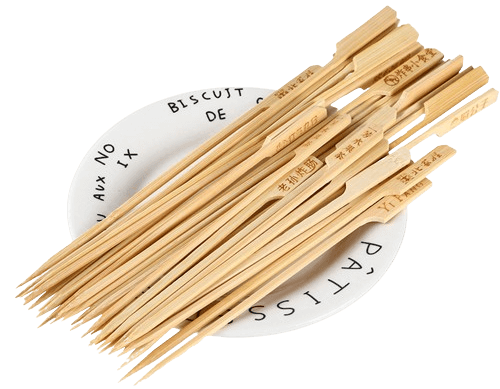Key Takeaways
| Aspect | Details |
|---|---|
| Environmental Impact | Reusable chopsticks significantly reduce deforestation compared to disposable options. |
| Economic Benefits | Long-term cost savings from durability and repeated use. |
| Cultural Significance | Deep historical roots in Asian cultures, symbolizing tradition and respect. |
| Material Choices | Bamboo, wood, metal, and composites offer different aesthetics and environmental impacts. |
| Product Care | Proper maintenance can extend the life of chopsticks, enhancing sustainability. |
| Where to Buy | Recommendations for top brands and buying tips are available at Ecostix Global. |
I. Introduction
In an era where sustainability is more than just a buzzword, choosing the right dining utensils can make a significant environmental impact. At Ecostix Global, we emphasize the use of high-quality, sustainable bamboo chopsticks. These are not just tools for eating but symbols of a shift towards more eco-conscious living.
II. Why Choose Reusable Chopsticks?
Environmental Benefits
Disposable chopsticks, commonly made from wood, contribute heavily to deforestation and waste. By contrast, reusable chopsticks made from materials like bamboo, which is a highly renewable resource, offer a sustainable alternative that can drastically reduce these impacts.
- Data Point: China produces billions of pairs of disposable chopsticks annually, leading to the felling of millions of trees.
- Environmental Impact: Switching to reusable options can save millions of trees and reduce landfill waste significantly.
Economic Advantages
Reusable chopsticks are not only an eco-friendly choice but also a cost-effective one. Unlike disposable versions, reusable chopsticks can last for years, offering significant savings over time.
- Cost Analysis: The initial investment in a pair of reusable chopsticks pays off as these need not be replaced frequently.
- Durability and Cost-Effectiveness: High-quality materials like those used in Ecostix Global products ensure longevity and sustained performance, which translates to lower costs per use.
III. Cultural Significance of Chopsticks
Chopsticks are not just eating tools; they are deeply embedded in the traditions and daily lives of billions of people across Asia. Their use reflects a rich history and a profound cultural connection.
Historical Background
- Origin: Chopsticks have been used for thousands of years, with origins tracing back to ancient China.
- Evolution: Over the centuries, chopsticks have evolved from simple cooking tools to intricate tableware that reflects status and artistry.
Chopsticks in Modern Culture
- Symbolic Meaning: In many Asian cultures, chopsticks are more than just utensils. They represent a way of life and are a crucial part of dining etiquette.
- Cultural Practices: Proper usage of chopsticks, such as not sticking them vertically into a bowl of rice, holds cultural significance and shows respect.
This detailed exploration into the environmental, economic, and cultural dimensions of reusable chopsticks underscores their importance. For more insights on how you can make a difference by choosing sustainable dining practices, visit our blog on Ecostix Global.
IV. Choosing the Right Chopsticks
Materials Used
Choosing the right material for your chopsticks is crucial not only for durability but also for environmental impact. At Ecostix Global, we focus on bamboo because of its sustainable and renewable qualities.
- Bamboo: Rapidly renewable, bamboo grows quickly and requires minimal resources. It is strong, lightweight, and naturally antimicrobial, making it ideal for repeated use in dining.
- Wood: Traditional but less sustainable, wood requires more time to grow and has a higher ecological footprint.
- Metal: Durable and easy to clean, metal chopsticks can last a lifetime but lack the natural feel and warmth of bamboo or wood.
- Composite Materials: Often made from recycled or biodegradable components, composites can offer an innovative approach to sustainability.
Each material has its benefits and ideal uses, which are detailed further in our guide to choosing chopsticks, available here.
Design and Aesthetics
The design of chopsticks goes beyond functionality; it also speaks to cultural identity and personal style. Whether you prefer sleek modern designs or ornately decorated pairs, the choice of chopsticks can enhance the dining experience.
- Aesthetic Appeal: Different patterns and finishes can reflect personal taste or complement a dining setting.
- Functional Design: Some chopsticks are specifically designed with textured tips for a better grip on slippery foods.
For more about the aesthetic and functional aspects of chopsticks, explore our collection at Ecostix Global.
V. How to Use and Care for Your Chopsticks
Using Chopsticks Properly
Mastering chopsticks involves a technique that might seem daunting at first but can be quickly learned with practice.
- Holding Chopsticks: The lower chopstick should rest stationary, supported by the ring finger, while the upper chopstick is moved by the thumb, index, and middle fingers.
- Picking Up Food: This skill comes with practice, emphasizing gentle movements and coordination.
Maintenance Tips
Proper care extends the life of your chopsticks, making them a long-lasting part of your kitchen.
- Cleaning: Wash bamboo chopsticks by hand with mild soap and avoid soaking them in water to prevent splitting.
- Storage: Dry thoroughly and store in a dry place to prevent mold and warping.
Learn detailed care instructions to maintain the durability and sustainability of your bamboo chopsticks here.
VI. Chopstick Etiquette
Understanding and respecting chopstick etiquette is essential, particularly in cultures where their use is deeply ingrained.
- Respectful Use: Avoid actions like pointing with chopsticks or sticking them upright in a bowl, which are considered rude or linked to funeral rites in some cultures.
- Sharing and Serving: Use serving chopsticks if available, to maintain hygiene and respect towards others at the table.
For a comprehensive guide on chopstick etiquette, visit our informational page here.
Conclusion
Choosing and using reusable chopsticks wisely not only enhances your dining experience but also contributes positively to environmental conservation and cultural appreciation. By integrating these sustainable practices into our daily lives, we contribute to a healthier planet and a richer cultural experience.
Visit Ecostix Global to explore our range of eco-friendly bamboo chopsticks and learn more about sustainable dining practices at our product page.



